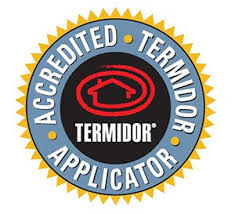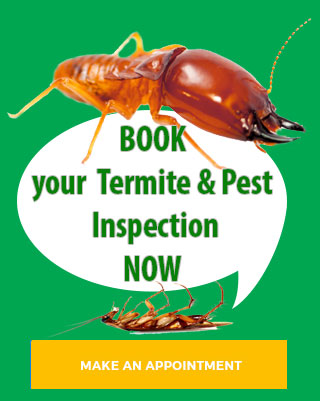Why termites are so dangerous
Commonly called ‘white ants’, termites are actually more closely related to cockroaches. But they are a much more destructive pest.
There are hundreds of species of termites in Australia, most of which pose no threat to houses and other buildings. But the few species that can cause trouble are responsible for more damage to houses each year than fires, floods or storms.
Feeding habits
Termites live on cellulose, which is found in all plant material. Not all termites eat wood, but those that do can come to your home looking for food. They travel through the ground from a nest that may be hundreds of metres away, then they build mud tunnels into your house. They can squeeze through cracks the thickness of a piece of paper.
Steel frames are not immune
Even steel-framed houses are not immune from termite attack. The termites can still get in and destroy wooden roof trusses, furniture and wood trim such as architraves. Some species of timber are resistant to termites, but none is entirely ‘termite-proof’.
Don’t wait until it’s too late
Homeowners don’t usually know termites are there until substantial damage has been done. They can eat anything made from wood inside the home and even gyprock and plasterboard walls, often leaving just a paper-thin layer of paint. Unfortunately, by this time they are right through the home, no matter how it is constructed.
Termite colonies
Termites are social insects, working and living together in colonies. Some subterranean termite queens can produce 2000 eggs per day and mature termite colonies may number up to two million individuals and exist for as long as 50 years.
A termite mound is the most familiar form of termite nest, but many termites have a completely underground existence, apparently without a central nest. Most of the species that do damage to buildings will have a central nest in the soil, or in dead or living trees.
Termite distribution
Although the coastal belt and northern parts of the country are generally regarded as the highest-risk areas for subterranean termite infestation, species which damage timber-in-service occur throughout mainland Australia. In practice, any structure containing wood is at risk of subterranean termite infestation – whether in the business heart of a city, in the suburbs or out in the country – unless protective measures are taken.


Accredited Termidor HE Applicator
- Advanced pest control operators who have chosen to specialise in providing the best available treatment.
- Upgraded training to ensure highly efficient installation of an enhanced treated zone with minimal disruption.
Evergreen Pest Management
Phone: 0409 849 452
What People Think About Us
Thanks to Evergreen Pest Control Cabarita who spotted the beginning signs of termites we were able to have them treated and the termites eradicated before they did any real damage.
we had an ant infestation that was driving us crazy!! Stu from Evergreen Pest went above and beyond to find where they were coming in and found their nest and stopped them dead in their tracks!!
I was recommended to use Evergreen Pest by my co-worker. I needed emergency help because of a bad attack of insects- especially ants and cockroaches, and they helped me to resolve this problem so quick! I’ll definitely be recommending them!
Evergreen Pest Control SERVICES AREAS
GOLD COAST PEST SERVICE AREAS
- Coolangatta
- Kirra, Billinga, Tugan
- Tullebugera
- Elanora
- Palm Beach
- Burleigh Heads
- Burleigh Beach
NORTHERN NSW PEST SERVICE AREAS
- Tweed Heads, Banora Point, Terranora, Bilambil
- Chinderah, Fingal Heads, Kingscliff, Cudgen
- Salt, Pepper, Reef, Casuarina Beach, Duranbah
- Tumbulgum, Condong, Eviron, Murwillumbah
- Mooball, Burringbar, Uki, Bray Park, Clothiers Creek
- Cabarita Beach / Bogangar, Hasting Point, Pottsville Beach
- Billinudgel, Mullumbimby, Byron Bay, Suffolk Park, Bangalow
- North & South Golden Beach, New Brighton, Ocean Shores, Brunswick Heads


